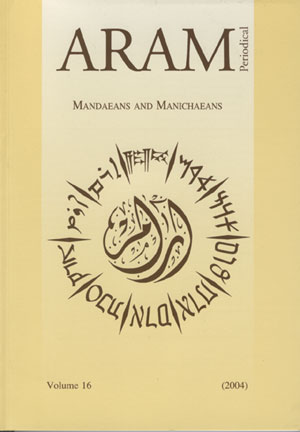 previous article in this issue previous article in this issue | next article in this issue  |

Preview first page |
Document Details : Title: RM KLH Subtitle: A Nation of Aram? Author(s): GROSBY, Steven Journal: ARAM Periodical Volume: 7 Issue: 2 Date: 1995 Pages: 337-352 DOI: 10.2143/ARAM.7.2.2002234 Abstract : The question posed by the title to the following considerations is not an unreasonable one despite the prevailing historiographical prejudice that insists that the ethno-geographic collectivity known as nationality is exclusively a modern phenomenon; for there appears in line five of Face A of Sefire Stele I the apparent self-designation “all Aram” – a self-designation that seemingly refers to a relatively extensive, yet bounded territorial collectivity. It would appear from the inscriptions of the Sefire Stele that “all Aram” was understood by “all Aram”, or at least by Matî'el of Arpad (IA, line 1), to encompass “Upper and Lower Aram” (IA, line 6). It is not exactly clear what was meant by the evidently geographical designation “Upper and Lower Aram”. It is possible that “Upper Aram” referred to Syrian Aram, while “Lower Aram” referred to an area in the vicinity of Babylonia. However, it is more likely that “Upper Aram” and “Lower Aram” referred to some kind of a division of a Syrian “all Aram”; that is, a bounded area (and its population) stretching from the Beqa' Valley/Damascus in the south to Bet-Gush/Arpad and perhaps Ya'di/Sam'al in the north (IB, lines 9-10). |
|


